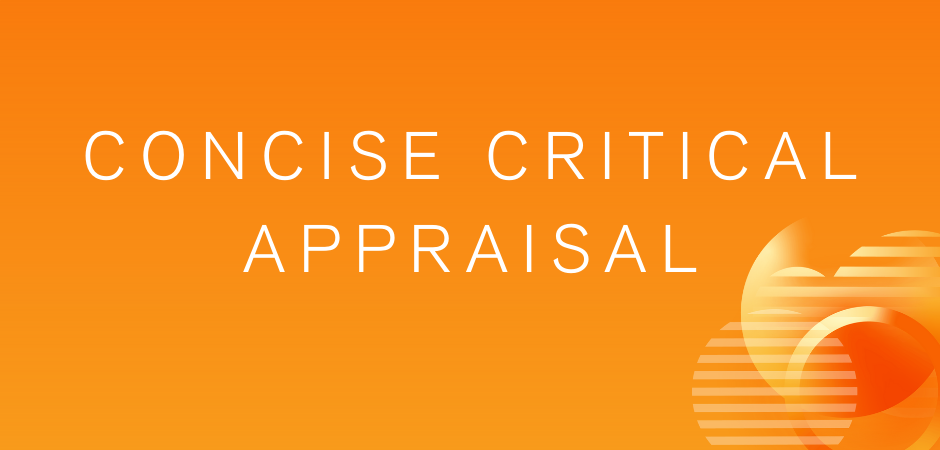Kuppermann et al (N Engl J Med. 2018;378:2275-2287) sought to prospectively determine the role that fluid makeup and rate have on the development of neurologic injury in children with DKA.
Although rare, neurologic injury from diabetic ketoacidosis (DKA) in children remains the most concerning complication for pediatric critical care practitioners. These neurologic findings can be both severe (brain herniation) or more subtle (memory loss) (
Ghetti S, et al. J Pediatr. 2010;156:109-114). The physiologic cause of these neurologic injuries was historically thought to be primarily related to the rapid administration of fluid during resuscitation, which leads to brain edema (
Mahoney CP, et al. Pediatr Neurol. 1999;21:721). Although the evidence for this theory is based on retrospective reviews that may have significant bias, many treatment regimens have been developed that stress slower rehydration with isotonic fluids. However, some recent studies suggest that the brain injury sustained during DKA may instead be related to ischemic reperfusion injury that sparks endothelial cell injury and inflammation (
Close TE, et al. Microcirculation. 2013;20:534-543). Kuppermann et al (
N Engl J Med. 2018;378:2275-2287) sought to prospectively determine the role that fluid makeup and rate have on the development of neurologic injury in children with DKA.
In this prospective controlled trial involving 13 emergency departments within the Pediatric Emergency Care Applied Research Network (PECARN), the authors compared neurologic outcomes after four different fluid regimens in patients younger than 18 years who presented with DKA—one group with a fast rehydration rate using 0.45% normal saline (NS), one group with a fast rehydration rate using 0.9% NS, one group with a slow rehydration rate using 0.45% NS, and one group with a slow rehydration rate using 0.9% NS. The primary outcome was deterioration of neurologic status (defined as a Glasgow Coma Scale [GCS] score below 14 twice in an hour) within the first 24 hours of treatment for DKA. Secondary outcomes included short-term memory loss and clinically apparent brain injury (defined as a need for hyperosmolar therapy or intubation due to deteriorating neurologic status) during acute treatment for DKA and short-term and contextual memory loss and lowering of IQ 2 to 6 months after the episode of DKA.
A total of 1,389 patients were randomized between 2011 and 2016. Of these, there were 1,361 separate episodes of DKA in which the patients presented with GCS scores of 14-15 and so were placed into one of the four treatment groups. The baseline demographics did not differ statistically between the groups. Of those 1,361 episodes, 48 (3.5%), resulted in a drop in GCS score below 14, 22 (1.6%) involved the use of hyperosmolar therapy, and 12 (0.9%) had clinically apparent brain injury, of which one patient died.
Interestingly, there were no differences between the groups in any of the outcomes studied. The number of patients whose GCS score dropped below 14, the incidence of clinically apparent neurologic injury, and memory loss were not statistically different in any of the groups. In order to complete the neurologic and memory testing 2 to 6 months after the DKA episode, the authors were able to obtain data for 855 episodes (66%), and again found no difference between the groups. The only differences found between the groups were found in subgroup analysis. In the subgroup divided by Pco
2, one of the memory tests (forward digit span recall) was statistically better in the rapid rehydration groups than the slower rehydration groups. The patients with lower pH also had improvement in one of the memory tests (backward digit span recall) if they were treated with rapid rehydration compared to slowly rehydrated patients.
This study is important because the authors provide insight into the pathophysiology of brain edema and DKA. If the rate of rehydration and type of fluid used in rehydration do not effect outcomes, then the theory that brain swelling is related to rapid drops in serum osmolarity becomes less likely and cerebral ischemic reperfusion injury more probable. However, before changes in practice occur, there should be still more evaluation because these results run counter to those of other works (
Mahoney CP, et al. Pediatr Neurol. 1999;21:721).
Author of this installment of Concise Critical Appraisal
:
Daniel E. Sloniewsky, MD, is an associate professor in the Division of Pediatric Critical Care Medicine in the Department of Pediatrics at Stony Brook Long Island Children’s Hospital. Dr. Sloniewsky is an editor of Concise Critical Appraisal.
